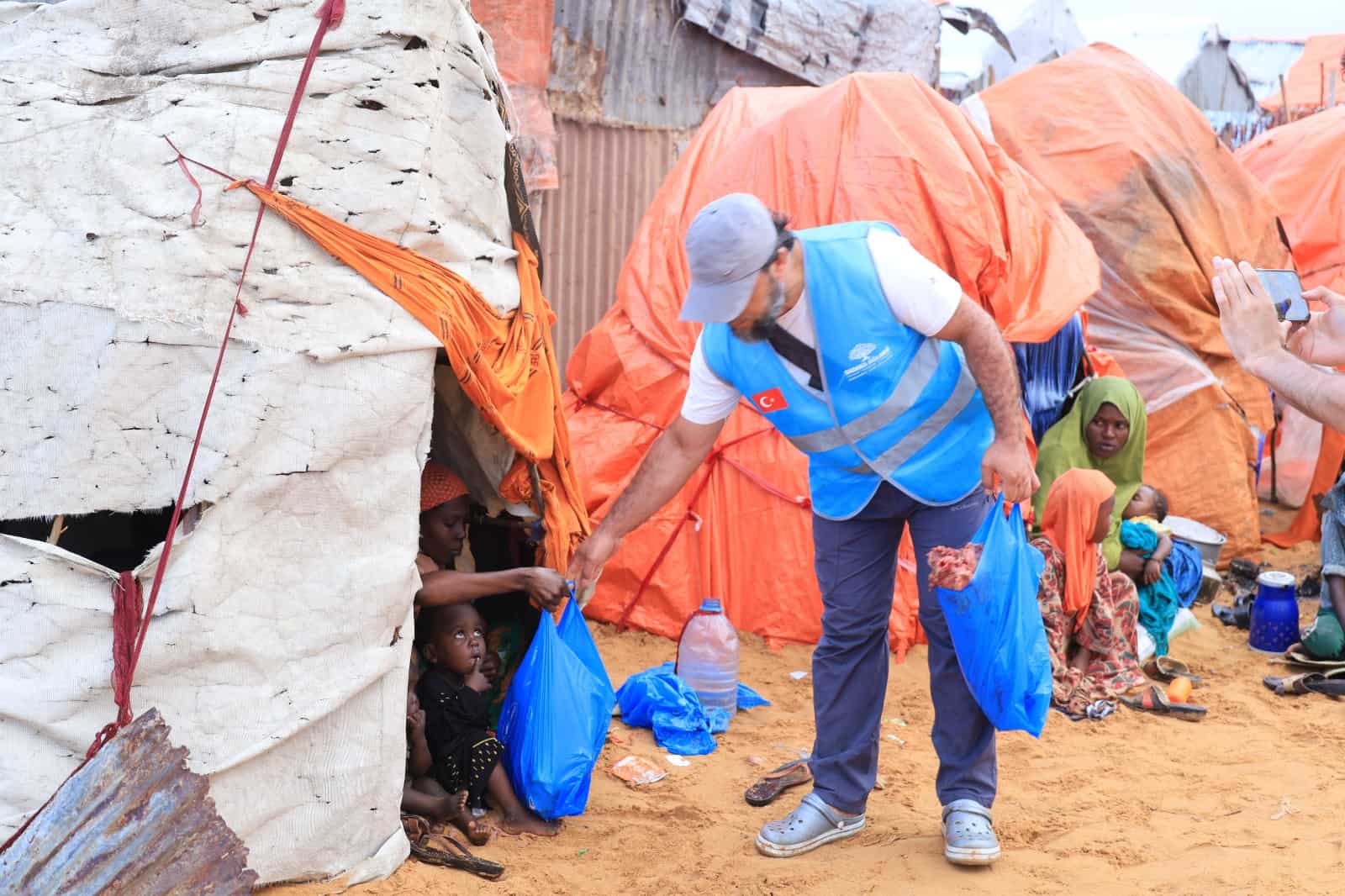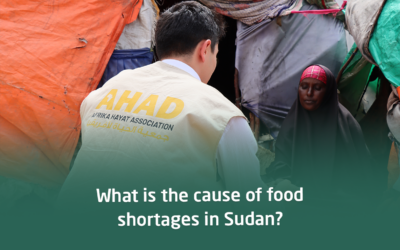The Madagascar famine is a food crisis that the Republic of Madagascar has been experiencing since 2019 due to drought and climate changes. The famine began after the failure of the agricultural crop and the lack of Water Resources in the country. The famine led to high rates of hunger and undernutrition among the population, and the need for international assistance to address this crisis increased. The Madagascar famine is considered one of the worst food crises in the modern history of the country.
Information about the history of the Madagascar famine
The Madagascar famine began in 2019 after a failed agricultural crop and a decrease in water resources. This famine is one of the worst food crises in the history of Madagascar, as it led to high rates of hunger and undernutrition among the population. The country is increasingly in need of international assistance to address the challenges faced by the Malagasy people as a result of this food crisis.
Causes and effects of the Madagascar famine
The causes of the Madagascar famine are due to the failure of the agricultural crop and the lack of Water Resources, which exacerbated hunger and undernutrition among the population. This has had negative consequences for the local economy and public health, as the population suffers from a lack of food and proper nutrition. This food crisis requires urgent intervention and international support to meet the needs of the people in Madagascar.
The food situation in Madagascar before the famine
Before the famine, Madagascar was facing significant challenges in the field of food security. According to the World Bank, the country had a hunger rate exceeding 9% of the population, and almost 3.7 million people were malnourished. The challenges lie in the constant increase in the population and high poverty rates, with the concentration of agricultural production on some basic crops, which has made the country fragile in the face of any new challenge in food security.

The Madagascar famine
Nutrition in Madagascar before famine
Before the famine, nutrition in Madagascar had a lot of challenges. The proportion of the population suffering from malnutrition was estimated at about 3.7 million people, there is a constant increase in the population and poverty rates. The country was also heavily dependent on staple crops such as rice, cabbage and wheat, making it vulnerable to any new challenge in food security. Fortunately, measures have been taken to improve nutrition and increase agricultural production in the country.
Food security challenges in Madagascar
Madagascar was facing numerous food security challenges before the famine. Overpopulation and poverty were two major problems, as well as the country’s dependence on staple crops such as rice, cabbage and wheat. Agriculture has also been affected by climate changes, which has led to a deterioration in the productivity of agricultural land. All these challenges make achieving food security in Madagascar difficult.
Weather and climate changes
Madagascar is experiencing severe weather and climate changes that negatively affect agriculture and food security. The country is experiencing increasing impacts of climate change, such as droughts, devastating floods and rising temperatures. These changes affect water availability and agricultural production and reduce the planting season, leading to food shortages and increasing stress on food security in Madagascar.
The impact of climate change on Madagascar
Madagascar is experiencing increasing impacts of climate change. Devastating floods, frequent droughts and extreme temperature rises are becoming more and more severe. These changes affect the availability of water and agricultural production in the country. They cause a reduction in the planting season and lead to food shortages and increased stress on food security in Madagascar. It is necessary to adopt strategies to adapt to these challenges and protect agricultural communities.
The impact of extreme weather on agriculture in Madagascar
Climate changes are increasingly causing extreme weather in Madagascar, such as floods and droughts. Such severe weather negatively affects agriculture in the country, crops are damaged and planting processes are disrupted. The shortened planting seasons due to drought and the destruction of crops due to floods lead to a lack of agricultural production and a deterioration in food security in Madagascar.

Consequences of famine on the population
Famine in Madagascar has severe effects on the population. Many suffer from hunger and lack of nutrition. Their health, ability to work and grow are negatively affected. The number of displaced people is also increasing due to the loss of crops and agricultural resources. The population lives in difficult conditions and struggles to get enough daily food.
Effects of hunger and undernutrition on the population
The population in Madagascar is suffering from the effects of hunger and nutritional deficiencies caused by famine. Hunger leads to a lack of energy, a weakened body and a weakened immune system, which makes them more susceptible to diseases and injuries. Children are particularly affected, as hunger can cause growth retardation and general health deterioration. Urgent action should be taken to provide the necessary food to the affected population.
The impact of famine on health and the local economy
The Madagascar famine is causing a deterioration in the health status of the population, as people suffer from undernutrition and high mortality rates. In addition, the local economy of Madagascar is significantly affected, as economic activity is declining as a result of a deterioration in the volume of production and a decrease in the purchasing power of citizens. The fight against famine requires collective efforts to improve the health situation and promote economic growth in the region.
The international role in the fight against the Famine of Madagascar
International actors play an important role in the fight against the Famine of Madagascar. The international community provides emergency assistance to the famine-affected population by providing food and medical support. Joint cooperation in the financing and implementation of agriculture programs and the development of a strong agricultural infrastructure is also an important step in achieving food security and mitigating the negative effects of famine in Madagascar.
Helping the international community in the face of famine
The international community has actively contributed to the response to the Malagasy famine by providing support and assistance. Many countries have provided emergency assistance, including food and medical assistance. International organizations have also implemented programs to strengthen food security and develop agricultural infrastructure in Madagascar. International cooperation in the fight against famine is aimed at improving the living conditions of the affected population and providing sustainable solutions for food security in the future.
Food programs and international funding to help Madagascar
Due to the great challenges faced by Madagascar due to the famine, many international organizations have implemented programs and projects to provide food and funding to help the affected population. The United Nations and international financial institutions such as the World Bank and the International Monetary Fund have provided financial support to Madagascar. Humanitarian organizations have also launched emergency programs to provide food and nutritional assistance to famine-affected communities. These programs are aimed at meeting basic food needs and maintaining food security in Madagascar.

Solutions and measures to address the Madagascar famine
Several solutions and measures have been taken to combat the Madagascar famine and mitigate its impact on the population. International organizations such as the UN, the World Bank and financial institutions provided the necessary support through food and financing programs. The Malagasy government is also striving to strengthen food security and improve agricultural infrastructure. These joint efforts are aimed at providing food and improving the living conditions of the affected population.
Local and international efforts to combat famine
The Malagasy government, in cooperation with international organizations, is working to implement solutions to combat the Malagasy famine. These efforts include providing food aid and improving the living conditions of the affected population. It also aims to enhance food security and increase agricultural production by supporting the agricultural sector and improving agricultural techniques and practices. Local and international efforts continue to provide assistance to Madagascar to address the challenges of famine and achieve food sustainability.
Visit the ahad website to see the assistance and programs it offers
Improving food security and agriculture in Madagascar
The Malagasy government, in cooperation with international organizations, is working to implement solutions to combat the Malagasy famine and improve food security and agriculture in the country. These efforts included supporting the agricultural sector and improving agricultural techniques and practices. Food assistance was also provided to the affected population, improving livelihoods and nutrition in famine-affected areas. Local and international action continues to improve food security in Madagascar and support the population to achieve food sustainability.
Related articles:




